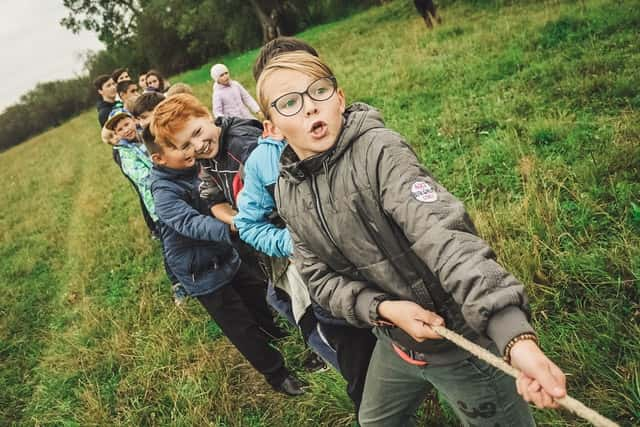The average child in the U.S. is thought to spend between four and seven minutes a day playing outdoors in an unstructured manner, and four to six hours a day before a screen. This fact has many effects on their physical and mental health, affecting everything from their posture to their ability to focus and calm down in a natural way.
Harvard Biologist, Edward O. Wilson argued that human beings are instinctively attracted to the Great Outdoors. If your school or academy offers you the chance to take classes or sport to a green or blue area, taking advantage of this outdoor education opportunity can benefit your students in many ways.
Green and Blue Spaces Calm the Body and Mind
Numerous studies have shown that spending time in natural areas has a powerful ability to lower levels of the stress hormone, cortisol. Teachers who only have a few minutes to spare outside with their students may lament that they are doing little good by inviting children to play outside.
In fact, a Cornell University study found that as little as 10 minutes outside can help students feel happier and reduce the effects of both physical and mental stress. Ideally, students should aim for 10-50 minutes outdoors per day to improve mood, focus, and physiological measurements such as their heart rate and blood pressure.
Teaching Children to Climb Trees Safely
If you are watching children at playtime, you can take the opportunity to teach them one vital skill – climbing trees. University of North Florida researchers found that climbing trees and balancing on beams can dramatically improve cognitive skills. The scientists said: “By taking a break to do activities that are unpredictable and require us to consciously adapt our movements, we can boost our working memory to perform better in the classroom and the boardroom.”
Other studies have shown that tree climbing boosts many more skills – including hand-eye coordination, concentration, spatial reasoning and understanding, neural pathway development, emotional intelligence, and physical and mental resilience.
If you choose this outdoor education activity, make sure to teach children safe tree climbing techniques such as wearing fitting (not baggy) clothes, choosing a tree whose branches are at least six inches in diameter (and one that has plenty of accessible branches and knots), and never attempting to climb a dead or unhealthy tree.
Outdoor Learning Boosts Teachers’ Job Satisfaction
Learning outside can help reduce ADHD symptoms, boost children’s quality of life, and makes children more open to learning – as found in three different studies. Taking classes outdoors can also help you as a teacher, though, as found in a 2019 study by researchers at Swansea University. The study showed that even one hour per week of outdoor learning gives children a greater sense of freedom while also helping teachers improve their job satisfaction and general wellbeing.
Children and adults alike have a natural affinity with nature that benefits them physically and mentally. Studies have shown that the Great Outdoors can boost relaxation, improve cognitive skills, and make learning more enjoyable – to name just a few benefits. It can also make teachers feel a greater sense of satisfaction and engage their learners to a higher degree.
Useful Resources
- Outdoor education
- Outdoor education benefits
- Outdoor education schools
- Outdoor education games
- Outdoor education definition
- Outdoor education curriculum
- What is outdoor education?
- Outdoor education activities
- Outdoor education programs
- Outdoor Education Degree


